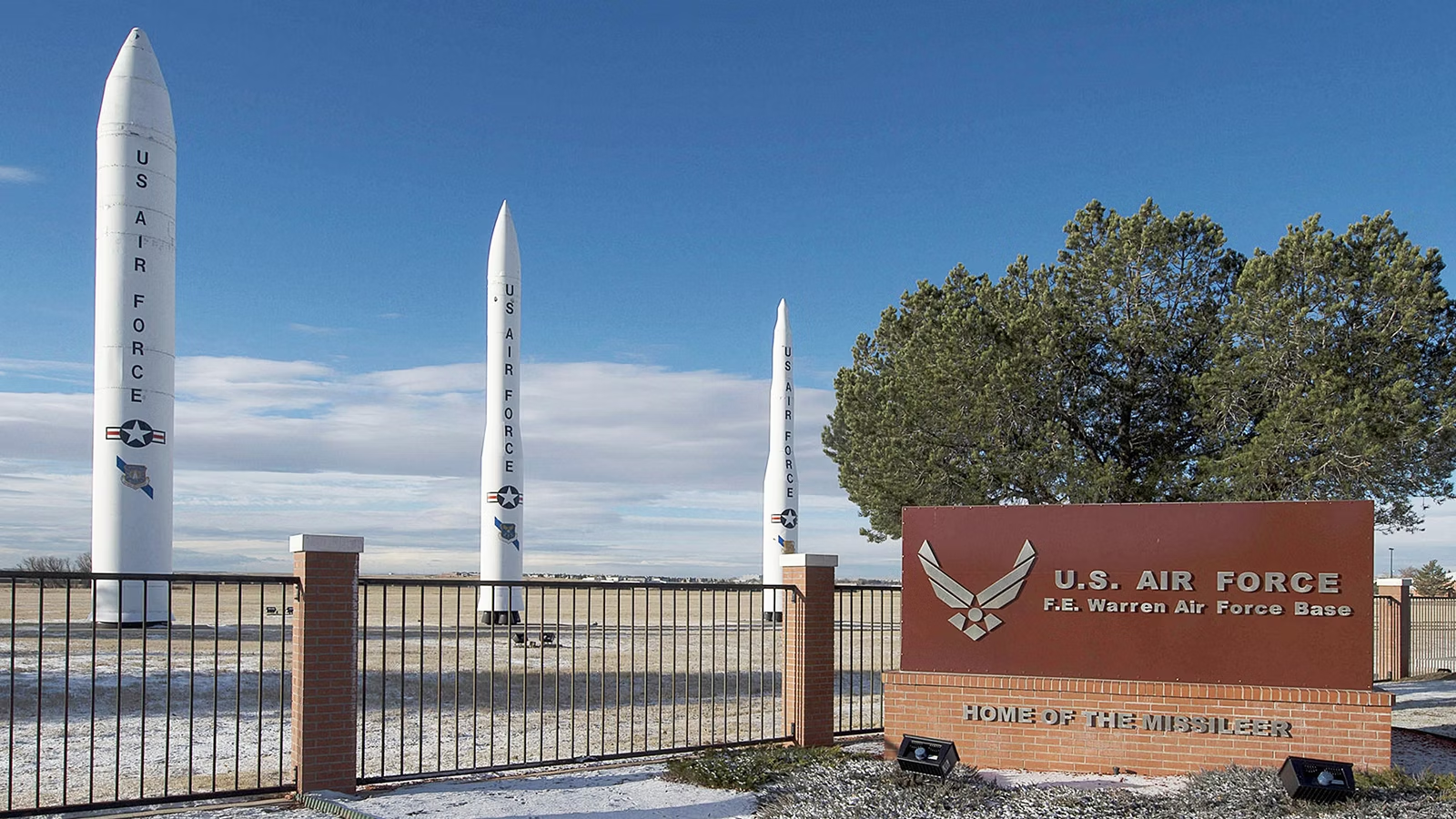A new generation of nuclear missiles are coming soon to replace the Minutemen III nuclear-armed intercontinental ballistic missiles, some of which are located in Wyoming.
The old Minutemen are the land-based leg of the nation’s retaliatory defense system. The other two legs, which together are intended to deter other countries from attacking us with their long-range missiles, include heavy bombers and ballistic missile submarines.
But since their installation began in the 1960s, missile technology has greatly advanced, and the Minutemen III nuclear system is now woefully out-of-date.
So much so, in fact, that the system still uses antiquated floppy disks for some of its processes and procedures.
“That kind of gives you a date of what we do,” 90th Missile Wing spokesman Joseph “Cos” Coslett told Cowboy State Daily. “You know, there’s been some modernizations that we’ve done since then, but we’re kind of at the tail-end of the lifecycle. The Minuteman III was only made to last 10 years, and we’ve made it last over 50.”
The new Sentinels will not only require less maintenance, but fewer operating personnel, according to the Department of Defense. The operating budget is projected at $264 billion over the 50-year lifespan of the fleet. That is over and above the cost of building them.
Details on the building cost were not readily available, as the designs are not yet final.

Same Structures, Just New Missiles
In all, there are about 450 Minutemen III missiles located in underground bunkers across multiple states.
The Sentinel design proposal, which is examined in 3,000-plus pages of detail in a required environmental impact statement (EIS) costing upwards of $33 million to prepare by itself, calls for building a new missile alert facility, or MAF, right on top of all the existing MAFs. The Minutemen III ICBMs, meanwhile, will be replaced with Sentinels situated in refurbished Minutemen III silos.
The old missiles will go through a decommissioning process in Utah, using protocols that are well-known and have been in place for 60 years. Anything salvageable will go back into the Air Force supply system, including any precious metals. But a large amount will be destroyed or melted down for scrap to prevent any possibility of leaking classified information, according to the EIS.
There won’t be more and there won’t be fewer MAFs or missiles once the project is complete, Coslett told Cowboy State Daily.
There will, however, be additional utility corridors — 960 miles of them, according to the EIS, to accommodate more advanced communications systems.
“If you can imagine cables running underground from this base all the way to all of the missile sites and missile alert facilities,” Coslett said. “That way there’s constant communication. That’s part of the project.”
MAFs Are Unassuming
The MAFs are all ranch-style homes that house a security force and a facility manager.
Each also comes with its own chef.
“The launch facilities look very unassuming,” Coslett said. “Basically, it’s a fence that has a very large hole in the ground, but it has a 110-ton blast door. You may have driven by one and didn’t even know it because they are very unassuming.”
Each MAF and missile crew command 10 facilities and has a security team to respond at a moment’s notice to any alarms or other issues.
For the missiles under the FE Warren Air Force Base, a workforce area will be built in Kimball, Nebraska, to house the 2,000 to 3,000 workers who will be working on the project at any given time for the two- to five-year construction period.
The area will include three-story dormitories with parking for up to 600 personal vehicles, as well as 70 buses and office parking for up to 250 vehicles.
Two other Air Force bases have similar missiles in place in Montana and North Dakota, and these are also being upgraded as part of the same project.
F.E. Warren Air Force Base, meanwhile, has a special role to play in all of this, as it is the headquarters for missile fields located in Montana, Nebraska and Colorado.
Testing Already Underway
The official record of decision for the EIS not been released for the Sentinel upgrade, but Northrup Grumman has already finished testing the first stage of the solid-rocket motor for the LGM-35A Sentinel in Utah. The motor met all expected performance standards, according to a media release from the company.
Modern digital engineering is being used to design advanced capabilities into these new missiles, which are expected to be cheaper to maintain with more flexible capabilities.
Northrup will produce stages one and two of the three-stage rocket, which will be assembled in Utah once every stage has been thoroughly tested.
Each missile will carry a 300-kiloton W87-0 warhead, and from 2030 on will be armed with the W87-1.
A yield has not yet been determined.
America Faces Increased Nuclear Threats
In a recent briefing, the Missile Defense Agency outlined some of the increasing nuclear threats that America now faces.
Perhaps chief among these renewed threats is China, which not so long ago sent surveillance balloons over the United States.
Balloon experts, like Cowboy State Daily meteorologist Don Day, have suggested the spy balloons most likely were outfitted with equipment to capture radio traffic — an inexpensive satellite. Since it’s lower to the ground, balloons can capture much more radio trafficking data than a traditional, space-faring satellite. One possible objective could have been assessing just how good U.S. early warning systems are.
Not long after the Chinese spy balloon invasion, U.S. government officials admitted that China has likely already surpassed the United States in the number of nuclear-capable, land-based intercontinental ballistic missile launchers. It’s also thought that their ground defenses are more than sufficient to block incoming nuclear weapons from the United States.
While the U.S. was at one time trying to take the road to zero nuclear weapons, other countries were clearly not traveling that path. In fact, countries like North Korea and Iran have developed more sophisticated missiles with new capabilities, including some with long-range capability.
“North Korea and Iran remain persistent threats,” director Michelle C. Atkinson said in outlining the Defense Agency’s 2024 budget request. “But today the national defense strategy views China as the pacing challenge and Russia as an acute threat to U.S. national security interests.”
Advanced capabilities for both Russia and the PRC include exceptional speed and unpredictable flight paths, Atkinson added.
Her presentation suggests that a new nuclear arms race is already well underway by superpower rivals, which will demand the United States rapidly catch up or risk being sidelined or worse.
That makes the current project that was already in progress to modernize the nation’s missile defense systems — not to mention the FE Warren Air Force Base’s mission — more important than it has been in decades.
If You Go
Several real estate transactions will be part of the upgrade to Minutemen missiles. Residents of Laramie County can learn more about that at a town hall meeting set for 6 p.m. Monday at the Pine Bluffs Community Center in Laramie County.
Experts for the U.S. Air Force and U.S. Army Corps of Engineers will be on hand to answer questions. More information is available by calling the Sentinel Hotline at 307-773-3400 or emailing afgsc.sentinel.hotline@us.af.mil.





